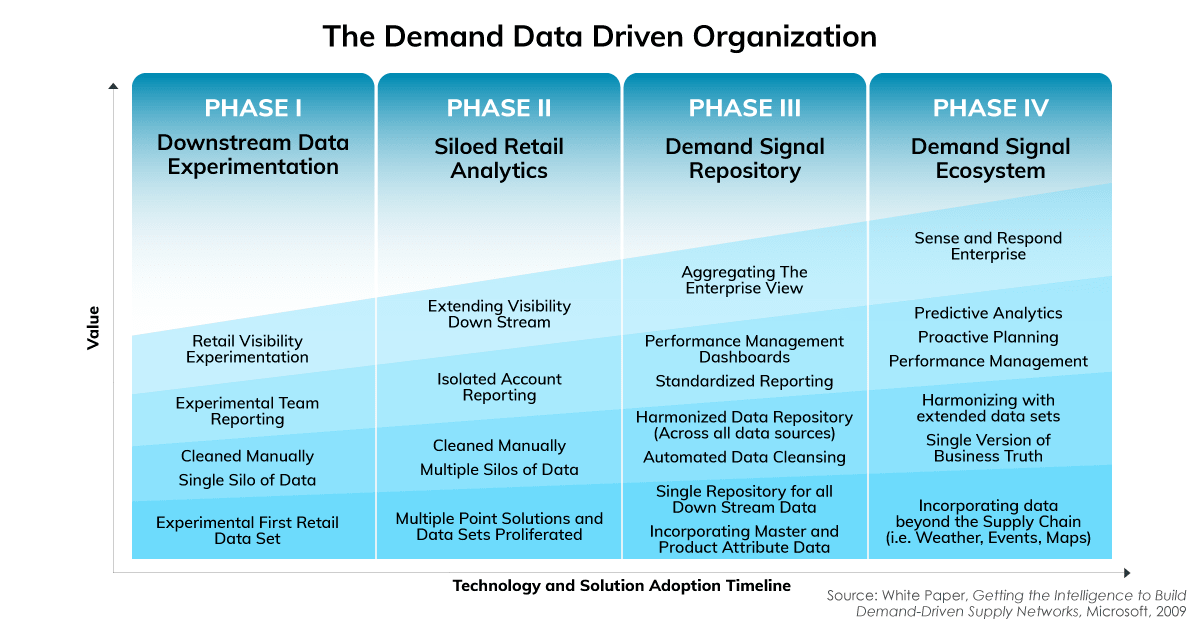
On the heels of our very well-received co-presentation with Phillips CSCO Ivanka Janssen on AI at last month’s Gartner Supply Chain Symposium in Orlando, I had the pleasure of facilitating our June 30 virtual roundtable—'Align Inventory to Consumer Demand’.
We were fortunate to attract a circle of senior procurement/supply chain executives from a wide swath of CPG industries—from healthcare devices and other tech innovators to toy and candy companies.I knew we’d chosen a true “hot topic” when I didn’t need to go far beyond introductions to get the ball rolling and allow everyone to share experiences and perspectives from the real world.
Even as we appear to see more light toward an end of a long pandemic tunnel, CPGs across the board are still struggling to meet fill targets for customer orders. Our discussion revealed several common challenges:
- Many CPGs are witnessing significant demand erosion among retail customers—in large part due to aggressive over-buying and sitting on excess inventory on hand—as we’ve discussed—as well as shrinking consumer pocketbooks in light of the current gas crunch and other sharp inflation.
- Even in spaces where consumer demand is still relatively strong, manufacturers are nervous about the effects of inflation-driven price increases on future orders. Where and when will higher costs and price points soften retail demand? No one is comfortable with best guestimates.
- Sales teams have been persistently frustrated over the past two years—because they can’t keep their promises to customers. Orders remain backlogged, due to upstream materials shortages, production downtime, logistics and other delays. Internal ERP systems that were considered mature and reliable can’t accommodate rapidly shifting goalposts—particularly for industries that require lead times as long as 12 months or more. In turn, supply chain execs are eager to recalibrate their available-to-promise with real-time customer demand.
- Without the benefit of accurate, data-driven demand forecasting, some CPGs are resorting to “blunt instruments”. Production of lower-tier SKUs has been paused entirely to devote production resources to strongest movers—probably why we haven’t seen some of our favorite product varieties on store shelves for months. In other cases, orders have been put on strict fulfilment allocations—fractions of original fill estimates—likely leaving no customers fuming, but few particularly happy.
So, in this ever-volatile economic climate, how can CPGs “cut through the chaos” and get closer to that perfect world where supply availability dovetails with retail demand?
I shared with the panel a chart I’ve used in the past that illustrates how the virtual treasure trove of downstream scan data can be leveraged into accurate forecasting and demand shaping—along with multiple other business benefits across the enterprise. Every organization is reliant on their own “black box” of technology to refine all this raw data into actionable demand intelligence.

Insight from that black box can play a pivotal role in maintaining win-win supply relationships with customers. Yet this is still largely an emerging data science—which many organizations struggle to wrangle internally.
The next slide I shared represents the “maturity curve” of a data-driven enterprise—from early adoption and experimentation (Phase I) through Phase IV, a full-fledged unified demand signal ecosystem, built upon a foundation of reliable analytics.

I wanted to find out where each of the panel would rate their own companies’ analytics journey as of today. The consensus was that most were still far closer to Phase I than Phase IV—and anxious to move forward. They generally recognize the advantages they’ve already gained via elementary data science, but felt they were only scratching the surface of it's true potential.
The hallmark of any productive roundtable is an active, insightful discussion among the participants—when they talk more than I do! There will always be plenty of vendors trying to push software products that customers don’t really need, but our takeaway from this dialogue is that the CPG world covets stronger strategic value from AI, machine learning and advanced data analytics—underscored by lingering uncertainties in our global economy—and decisionmakers are eager to look toward leading-edge solutions.

